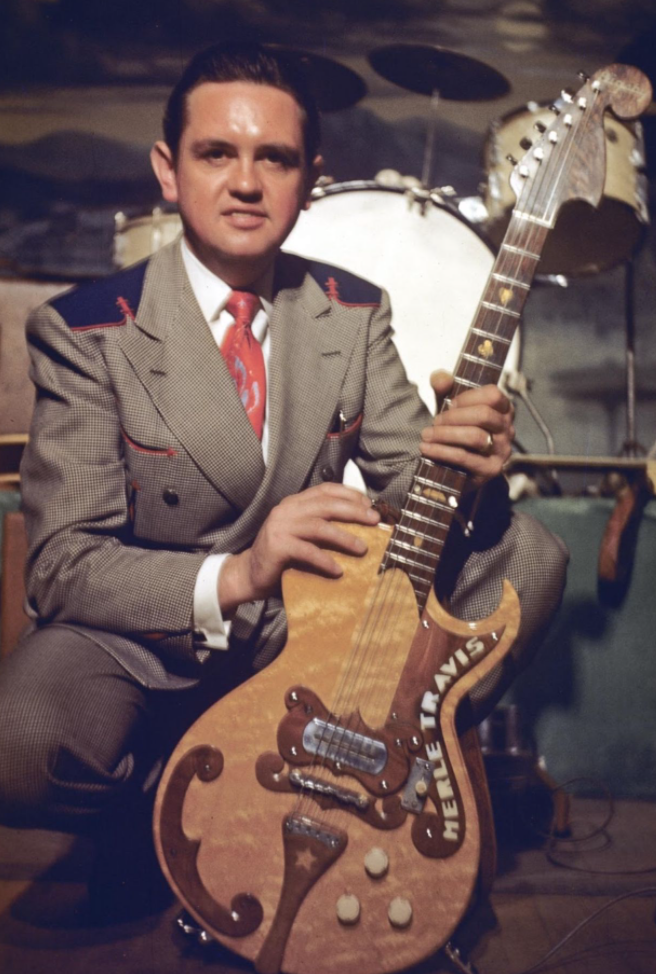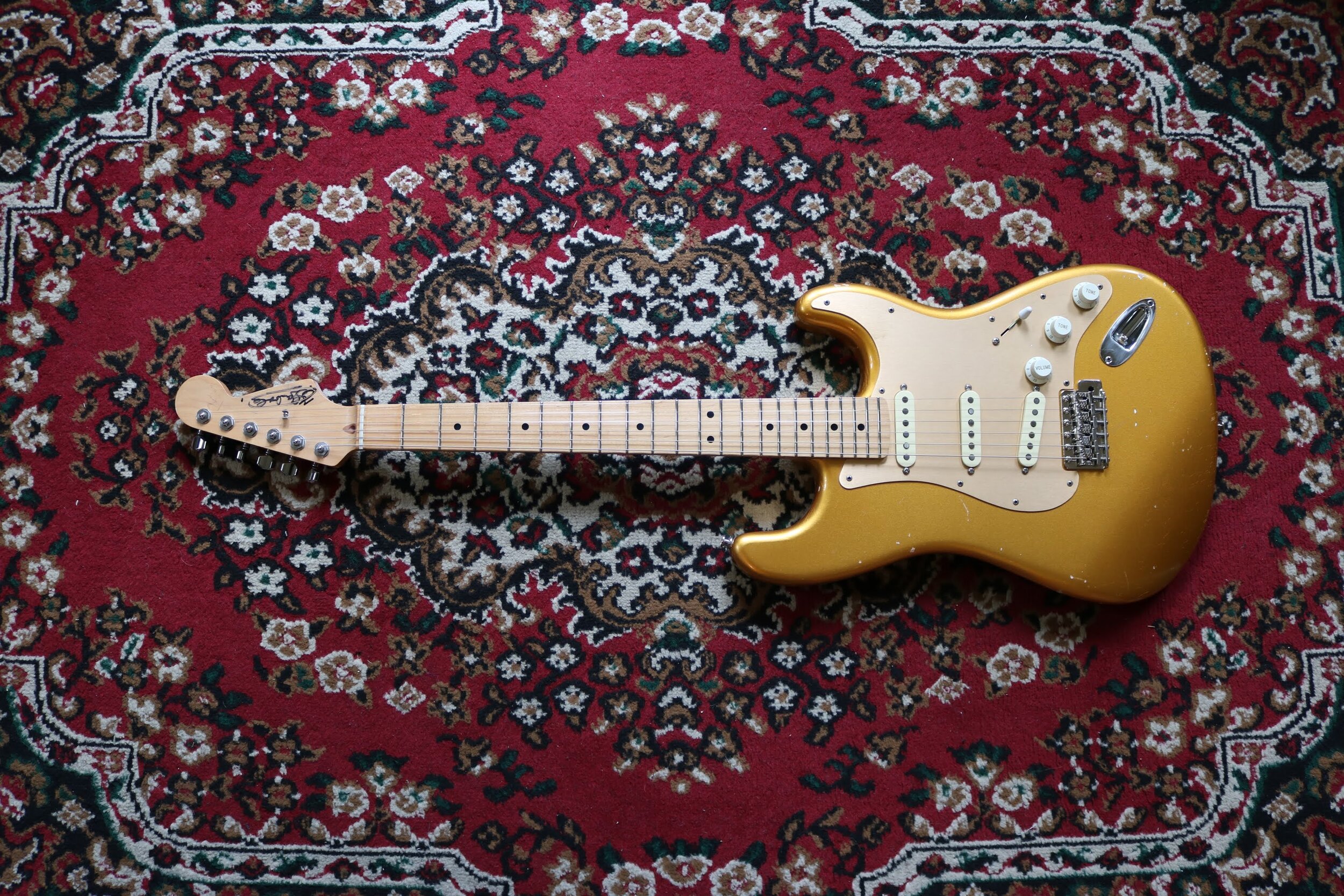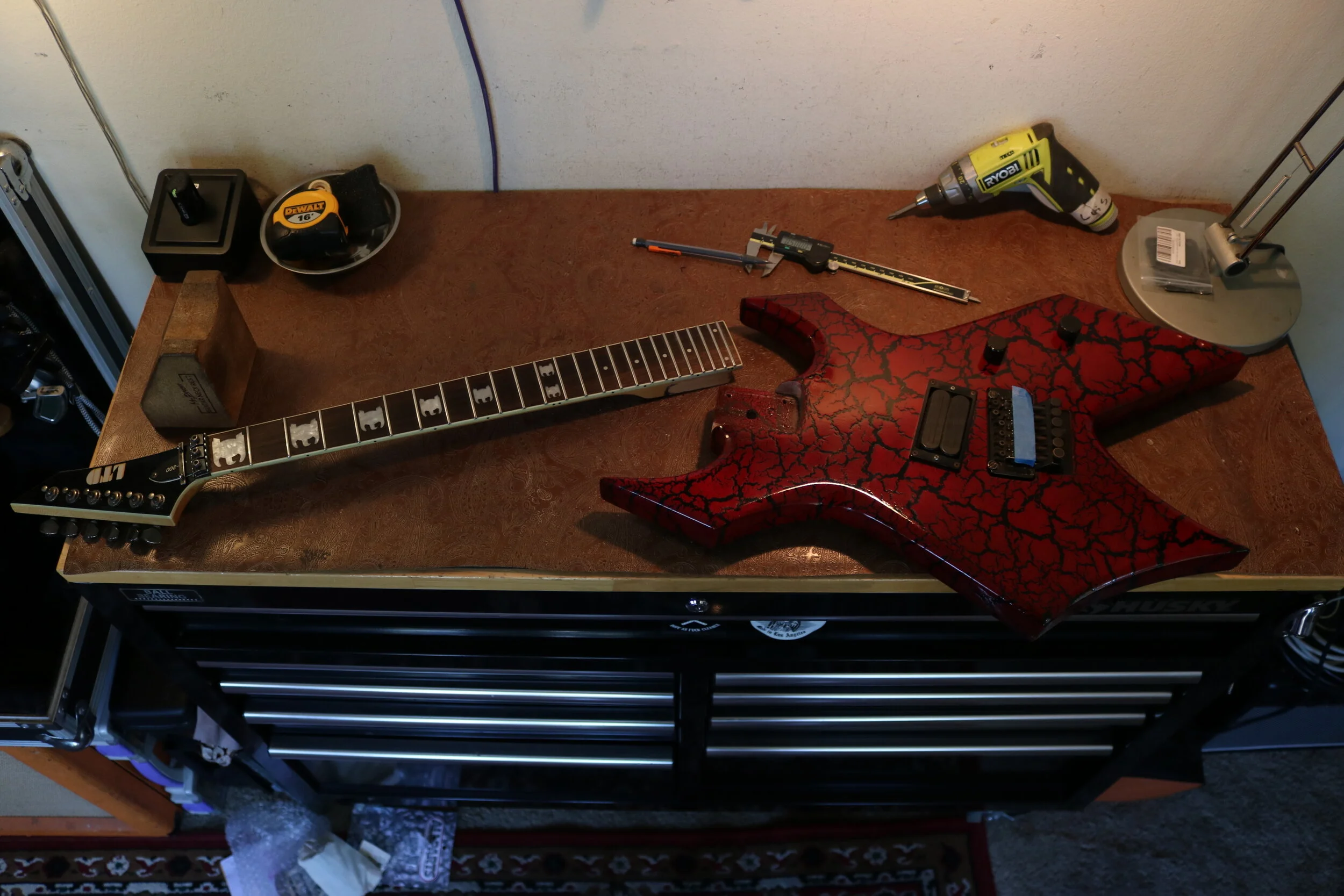Hi there, Ok, so I take it for granted that not everyone is active on Instagram or Facebook. As ya’ll know, I’ve been hard at work at building out my new workshop. It’s been an insane rollercoaster of emotions ranging from joy to stress levels I didn’t know where possible. I’m good now, but man, that was a wild ride. Anyways, Today is the first day I actually had a little bit of free time, so I decided to send out a quick update and do a photo tour of the new shop! And again, I couldn’t have done it without your continued support.
Welcome to MGT
My little homage to EVH and my front door.
The Workshop
So the first thing you’ll see is the very first workbench I ever owned. I got this Husky Bench at Home Depot about 5 years ago. It’s special because I remember when I first bought it, at the time, it was such an expensive investment. But man, did it pay for itself time and time again.
New Fancy tools
Finally have the space to get some bulkier and fancier tools. I’ve always wanted one of these
Dan Erlewine Neck jigs. What does it do? Well aside from making me look professional, It simulates string tension when the strings are off, it comes in handy when you’re doing fret work.
The Hangout
Come chill, come have a drink, and lets talk tone.
The Studio
The radness! Once you pick up your gear, try your instrument properly. Crank it!!!!!
Well folks, there you have it. It’s still a work in progress and i have a long way to go. It’s still a little surreal to think I have a place as big as this. The neighborhood has been dope, My neighbors have been so welcoming and helpful, the clients that have stopped by are loving. I still have a wood shop that I’ll be building out soon and hopefully expand on my custom ‘El Tone Cartel’ guitars and I’m extremely excited to share that with you in a future update. Till then, I hope you enjoyed this old school picture tour and If you’re in the neighborhood and wanna swing by shoot me an email over at luis@modernguitartech.com







































































































